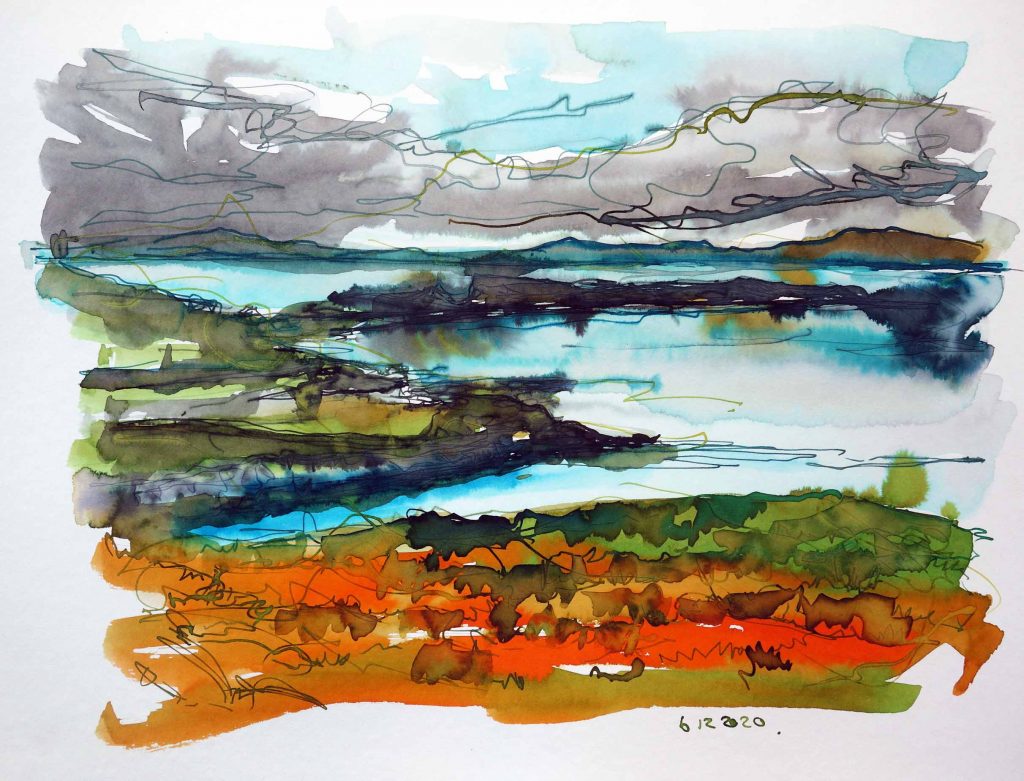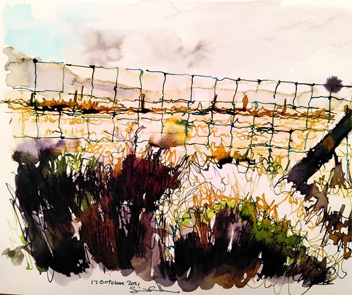One of my most precious memories is from 1999 when I was hiking the Illampu circuit in the Bolivian Andes with a group of friends. We were at about 3,000metres and it was really cold at night. One evening we got into one tent and lay four heads out one door and four out the other.
With a clear sky and no light pollution, we had a perfect view of the stars. It was the first time I had ever seen our Milky May. It was breathtaking and it profoundly affected my sense of being part of something bigger. I remember the view and the sound of our eight voices in the middle of nowhere talking about our dreams, about the immensity of our universe, about life, death, and the stunning spectacle of stars above us.
Systems
Fast forward to 2005 when I was studying for my Masters. One day while writing a paper on ‘a systems approach to sustainable solutions’ I realised everything can be viewed within a system. Water in the hydrological cycle, carbon in the carbon cycle, plants in their cycle of seed, plant fruit, decay, regrowth, etc. Earth moves in our solar system, within the Milky Way, and on it goes. Everything ultimately is connected in one, great, interconnection. So there’s no such thing as separate or away.
This was a simple realisation, but it changed my outlook on life and how I lived and worked from that day on.
Cycles
I kept on learning about how systems function and what it means for creative solutions. I was captivated by the movement within cycles, how some parts move quickly like the flowing of streams or rivers and some mostly imperceptibly slow, like the movement of the earth’s tectonic plates. This gave me the patience to observe and learn about pattern language and to let myself perceive changes that happen over longer periods of time: e.g. the cyclical changing of tides with moon phases and the changing colours of landscapes between seasons.
Systems and networks
“A system is an interconnected set of elements that is coherently organised around some purpose”
Donella Meadows
Within living systems, I became aware of the networks of connection that exist all around us and below our feet, like the connection and communication that takes place between trees in forests, some networks in huge areas like the Pando, a clonal colony of quaking aspen trees in the US covering 43.6 hectares.
Other vast networks are those of mycelium, the vegetable part of fungus upon which we rely for decay and the creation of soil. Our brains are made up of neural networks with complex connections relaying messages and our galaxy is part of a vast network of galaxies.
As I learned I became more fascinated with the connections in my work and across disciplines and less worried about outcomes. My learning evolved as my understanding of systems changed.
What has this got to do with creative thinking?
“Creativity is especially expressed in the ability to make connections, to make associations, to turn things around and express them in a new way”
Tim Hansen
Creativity is all about making connections within our own living system (our mind, heart, and body) and within the greater living systems, we are a part of. And it happens in iterative cycles throughout our life and work. As we set intentions, investigate ideas, try, fail, learn and try again we are recycling and modifying ideas. This is how we, like all elements of nature, evolve and adapt our creative ideas.
“Systems thinking is the study of complexity and the relationships and interactions among components of a system. Systems thinking is often introduced with the phrase, the whole is more than the sum of its parts.”
Integrate
An understanding of systems thinking leads us away from the idea of focusing on isolated elements and linear thinking to the awareness and understanding of interconnected circular cycles.
With this awareness we can create in more intentional and regenerative ways, bringing conscious creativity into systems we work within: our homes, the gardens we tend, the buildings we design, the community of people we relate to, the city we live in, etc.
Creative thinking is “A way of looking at problems or situations from a fresh perspective that suggests unorthodox solutions (which may look unsettling at first). Creative thinking can be stimulated both by an unstructured process such as brainstorming, and by a structured process such as lateral thinking”
Leon Ho
Skills for creative thinking include perception and empathy, being analytical (taking in information and data and being able to understand it), being open-minded, being organised, communicating, and being able to dissect ideas.
Our creativity can be harnessed to write, paint, draw, sculpt, construct, communicate and inspire. And I believe these forms of personal creativity are vital for our well-being, allowing us to understand the world and to enrich our culture. We can hone our personal artistic skills and equally, harness our creative thinking skills.
When we bring systems thinking and creative thinking together with the intention of making regenerative connections, then I believe we are on to something incredibly powerful. It is this idea that gives me hope. It is this idea that I am talking about when I speak of Creativity for change.
What it looks like
Examples of creative thinking for systems change cover a whole array of approaches including those that invite us back into connection, systems for approaching land management, new models of economics, and new forms of governance.
The Work that Reconnects – “an attempt to address the crisis of perception, otherwise known as ‘the delusion of a separate self’, that is believed to be at the core of the ecological, social, and economic troubles we are currently facing. In this way, it aims to help facilitate the realisation of what Thich Nhat Hanh calls ‘Inter-being’.”
Earth Dreaming
Permaculture – a systems approach to land management. The first principle of Permaculture is to observe. It is only by observing a system that we can begin to understand it.
New models of economics – The Circular economy and Donut economics are models that could replace our current linear (rather than circular) chrematistic model based on the accumulation of wealth from exponential growth (rather than regenerative cycles of growth, death, and regrowth).
Sociocracy – a systems approach to governance. Instead of a standard hierarchical majority rule system, sociocracy is based on the creation of circles with micro hierarchies and with decisions made by consent.
Conscious creative thinking is how we bring our awareness to create new ways of being in our world, to work in harmony with our living systems. This is different from the way most of society works now in that we develop skills in ‘joined-up thinking’, creating new connections that have not been seen before: new regenerative connections between man-made and natural systems so that they work in harmony with the natural flow of life. We learn to take no more than we need and not change elements in ways they cannot simply go back into the cycle.
Takeaways from the whistle-stop tour
Remember
- All living things exist and are connected in some way or other through great and small systems and networks.
- These systems are all in cycles of birth, maturity, death, and rebirth in different forms.
- Creativity, being part of all-natural things, is an ongoing cycle of change and adaptation
Try
- Observing in new ways – What you are seeing is not always the whole story. Look out for patterns (our minds love patterns so you’ll be a natural at this).
- Challenging your old assumptions when you notice new patterns.
- Understanding the level of the system you are working in e.g. microscopic, botanical, geographical, meteorological, galactic, etc
- Learning to move from linear to cyclical systems – e.g. buy simply made products that can simply be recycled/composted.
Even stars, the amazing objects that we see as constants in the night’s sky, are part of great systems and cycles of change that spam over billions of years.
“You — you alone will have the stars as no one else has them…In one of the stars I shall be living. In one of them I shall be laughing. And so it will be as if all the stars were laughing, when you look at the sky at night…You — only you — will have stars that can laugh.”
Antoine de Saint-Exupéry, The Little Prince



